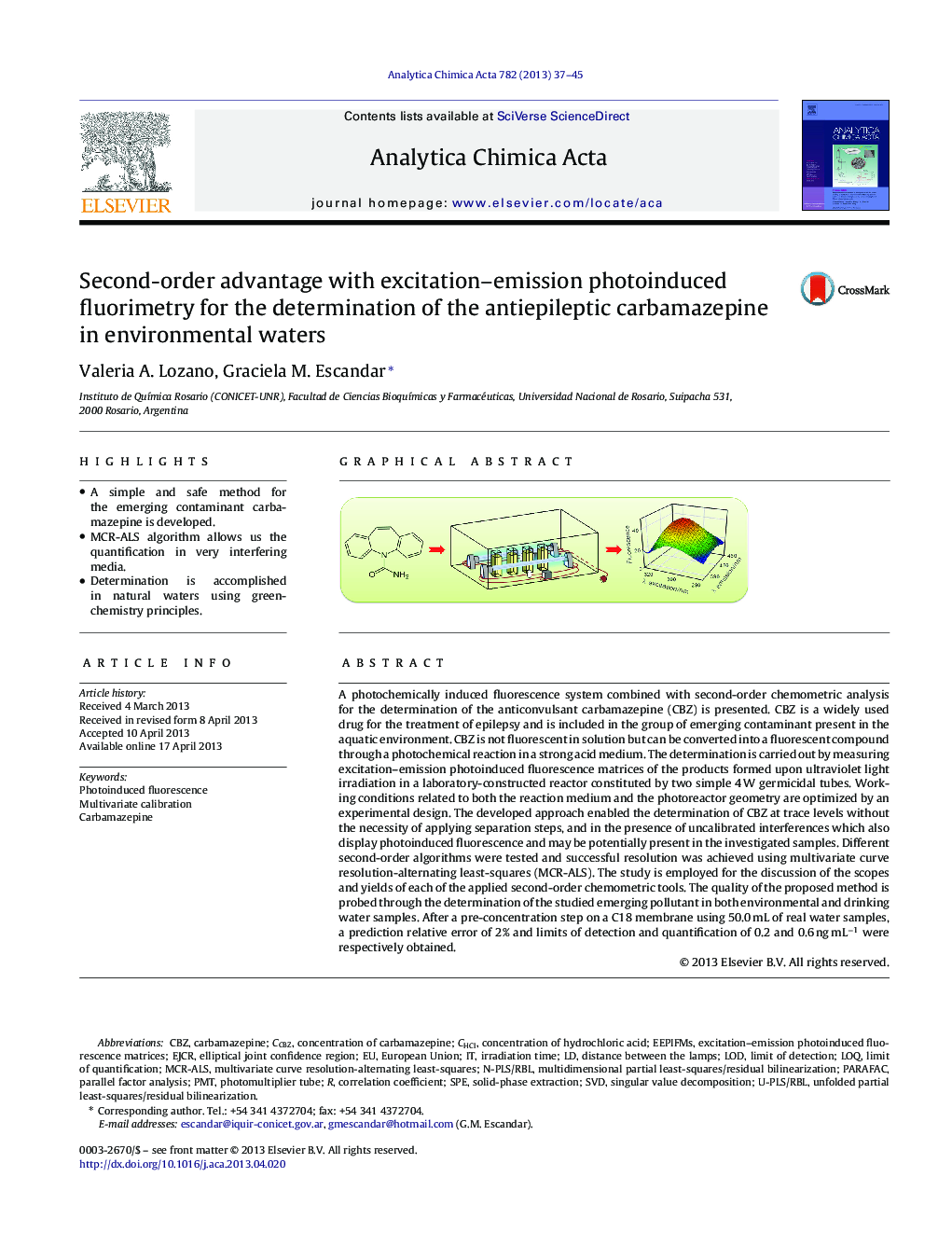| کد مقاله | کد نشریه | سال انتشار | مقاله انگلیسی | نسخه تمام متن |
|---|---|---|---|---|
| 1164883 | 1491050 | 2013 | 9 صفحه PDF | دانلود رایگان |

• A simple and safe method for the emerging contaminant carbamazepine is developed.
• MCR-ALS algorithm allows us the quantification in very interfering media.
• Determination is accomplished in natural waters using green-chemistry principles.
A photochemically induced fluorescence system combined with second-order chemometric analysis for the determination of the anticonvulsant carbamazepine (CBZ) is presented. CBZ is a widely used drug for the treatment of epilepsy and is included in the group of emerging contaminant present in the aquatic environment. CBZ is not fluorescent in solution but can be converted into a fluorescent compound through a photochemical reaction in a strong acid medium. The determination is carried out by measuring excitation–emission photoinduced fluorescence matrices of the products formed upon ultraviolet light irradiation in a laboratory-constructed reactor constituted by two simple 4 W germicidal tubes. Working conditions related to both the reaction medium and the photoreactor geometry are optimized by an experimental design. The developed approach enabled the determination of CBZ at trace levels without the necessity of applying separation steps, and in the presence of uncalibrated interferences which also display photoinduced fluorescence and may be potentially present in the investigated samples. Different second-order algorithms were tested and successful resolution was achieved using multivariate curve resolution-alternating least-squares (MCR-ALS). The study is employed for the discussion of the scopes and yields of each of the applied second-order chemometric tools. The quality of the proposed method is probed through the determination of the studied emerging pollutant in both environmental and drinking water samples. After a pre-concentration step on a C18 membrane using 50.0 mL of real water samples, a prediction relative error of 2% and limits of detection and quantification of 0.2 and 0.6 ng mL−1 were respectively obtained.
Figure optionsDownload as PowerPoint slide
Journal: Analytica Chimica Acta - Volume 782, 11 June 2013, Pages 37–45